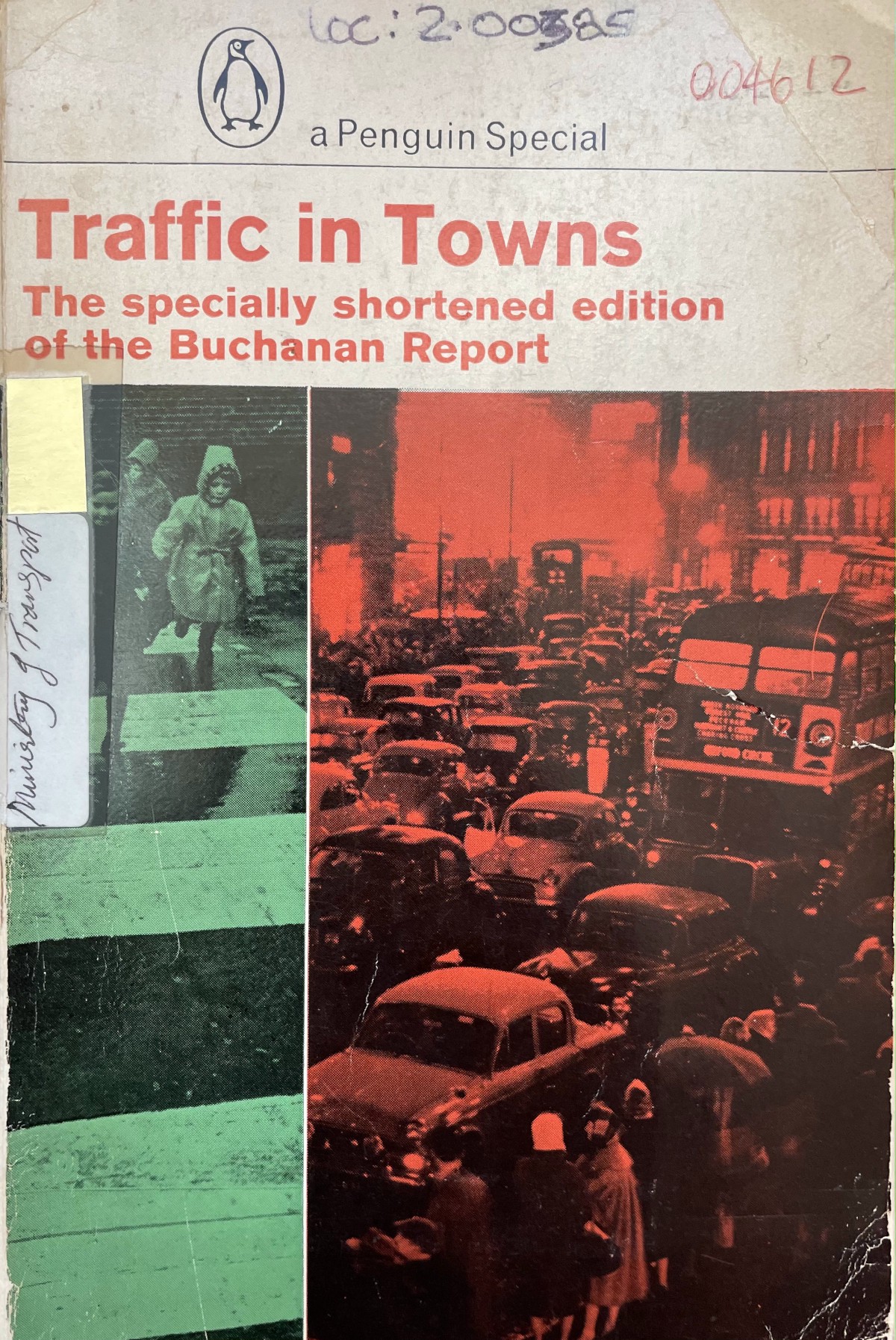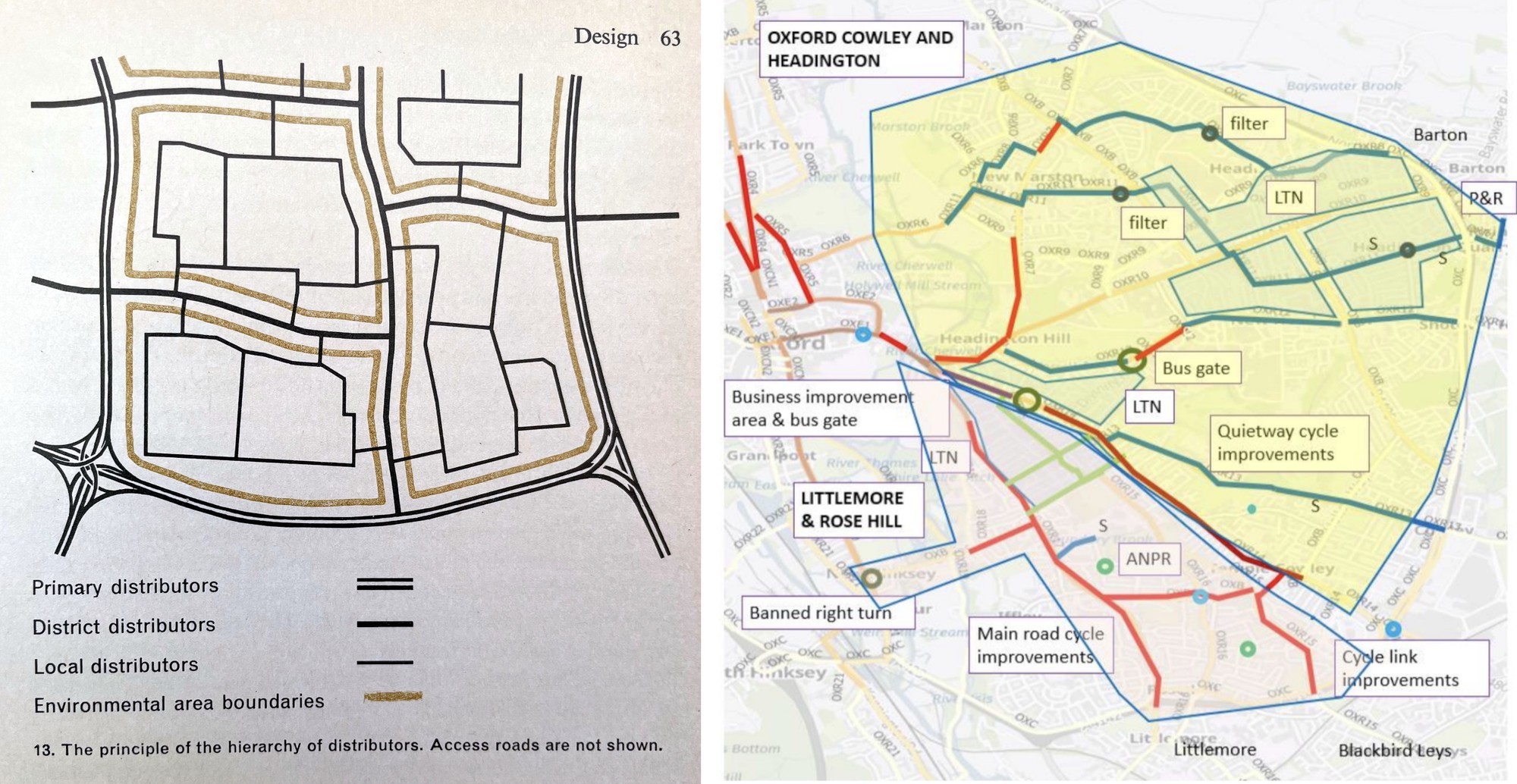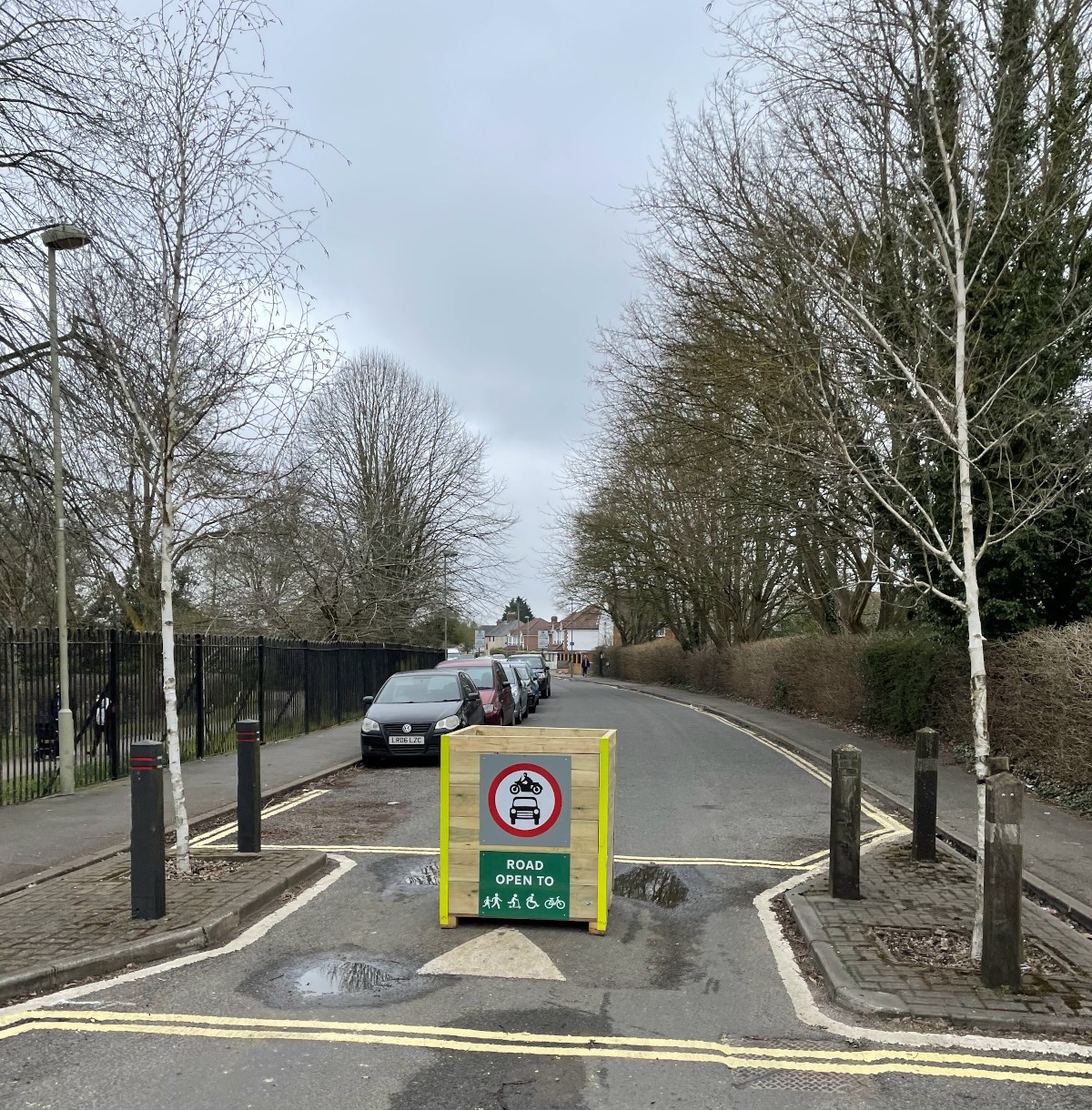Low Traffic Neighbourhoods: new, old ways of managing 'traffic in towns'
Despite their undeniable topicality, LTN are reinterpreting ideas dating from 70 years ago

In this blog post we visit the influential report by Colin Buchanan in the 1960s, Traffic in Towns, or the Buchanan Report. We highlight how the Low Traffic Neighbourhoods that have popped up in London, and have started to pop up in the rest of the UK, are really nothing new in terms of thinking about how traffic should circulate in towns. In 1960 the then Minister for Transport Ernest Marples appointed Colin Buchanan to investigate the long-term development of motor traffic in urban areas and the impact this might have on British cities. In 1963 Traffic in Towns, the ‘Buchanan Report’ was published. This laid out a vision for the design of urban areas for the motor age and the relationship between routes and buildings.

Buchanan noted how the ‘jumbled arrangement of buildings’ was as much a cause of traffic difficulties in towns as the narrowness of the streets and frequency of intersections and that this compounded complex journey patterns between activities (p50). In short, the inherited layout of streets was not suitable for the movement of more and more motor vehicles. Buchanan’s prognosis was that ease of access for motor vehicles should be catered for so that vehicles could penetrate without delay to get as close as possible to the final destination without restriction. However, Buchanan also recognised the problems with this in terms of damage to the environment in terms of pollution, accidents, and intimidation by large fast moving vehicles. Buchanan came up with the analogy of corridors and rooms. Using movement around a large hospital as an example, he highlighted how a corridor system serves to distribute traffic (doctors, nurses, patients, visitors etc.) around the hospital which serve areas of the environment (wards, operating theatres, laboratories etc.) Although there is movement in the environment areas, this is strictly controlled so that the environment does not suffer from passing of traffic and that these areas are protected from through traffic (p59).

Buchanan recognised that streets need to be recognised for their primary function and that something needed to be done to protect residential areas experiencing increasing levels of motor traffic.
“There must be areas of good environment - urban rooms - where people can live, work, shop, look about, and move around on foot [Buchanan unfortunately omitted cycling] in reasonable freedom from the hazards of motor traffic, and there must be a complementary network of roads - urban. Corridors - for effecting the primary distribution of traffic to the environmental areas.” (P59)
Buchanan acknowledged that the environmental rooms could not be traffic free if they were to function (e.g. for people to drive to and from their homes or for homes to be serviced by other vehicles) but that the character of these areas should be protected.Buchanan envisaged a town as a cellular structure consisting of a network of interlinking distributor roads in which the environmental areas are set within. Longer journeys would be routed along distributor roads and would be discouraged from moving through environmental areas. The distributor roads would be arranged in a type of hierarchy with the function of canalising longer movements from locality to locality. Buchanan used the analogy of a tree with trunk focused on distribution of longer journeys and twigs corresponding to access roads to serve buildings.

In this sense, the Low Traffic Neighbourhoods can be seen as reinforcing the hierarchy of the road network which (re)establishes environmental rooms where daily life carries on and where maintenance of a good environment is paramount. Buchanan never defined the size or scale of environmental areas but did discuss ‘maximum acceptable level’ of traffic:
“Consider the case of an area of terraced houses in conventional streets with narrow pavements. The amount of traffic within such an area would obviously have to be curtailed if reasonable standards of environment are to be secured.” (p66).
He also drew attention to the trade-off that would need to be made between the acceptable standard of the environment, level of accessibility and cost incurred for physical alterations.In summary, while Low Traffic Neighbourhoods are contested, they may be thought of as simply reinforcing Buchanan’s original premise but against a backdrop of much higher motor traffic levels than was the case when Buchanan was filing his report. Moreover, since then, with rising environmental consciousness and changing values towards the motor car, the sands have undoubtedly shifted in terms of what constitutes an accepted standard of the environment within ‘environmental areas’. This will undoubtedly play out as debates rage on who are the likely winners and losers of the LTN interventions and the acceptable trade-offs between convenient car accessibility and the right to an environment that is more than just movement space.